Scientists and fisheries observers team up
Training the front lines: working with fisheries to reduce manta and devil ray bycatch
Fisheries bycatch is one of the greatest threats facing manta and devil rays, otherwise known as mobulid rays. To address these threats a team of fishers, fisheries observers, conservation non-profits and academic scientist have come together into an innovative working relationship with the common goal of assessing and reducing the impact of tuna seine bycatch on these charismatic species.
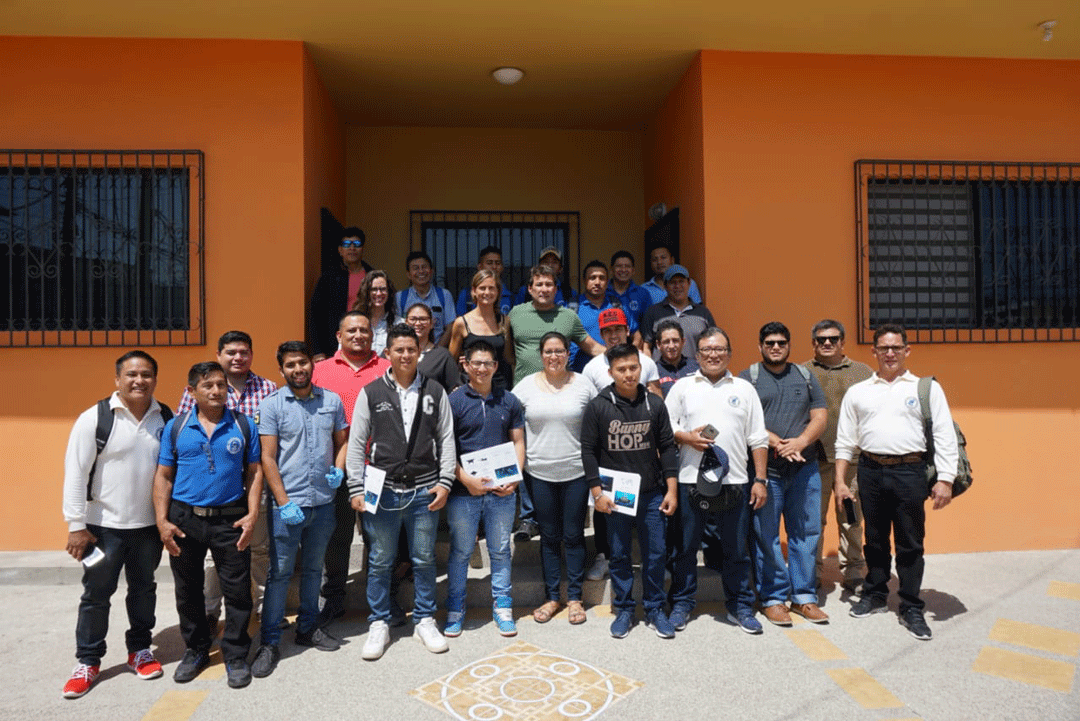
Photo ©
This August, our interdisciplinary team came together in the appropriately-named city of Manta, in Manabí Province, Ecuador, a coastal hub for industrial tuna fisheries. The academic scientists worked directly with a group of 30 fisheries observers from the tuna fisheries conservation organization TUNACONS and the national fisheries observing organization PROBECUADOR. These observers work where the nets meet the water; they’re the specialists who collect data aboard tuna fishing vessels in the Eastern Pacific, gathering essential information that supports the management of these international tuna fisheries. Partnering with these observers in SOSF-funded research projects is allowing us to understand the biology and ecology of manta and devil rays in the eastern Pacific. It is also helping in the development of tangible conservation solutions to reduce the impact of fisheries bycatch on these iconic ocean megafauna. These two linked projects focus on deploying tags to understand mortality rates of different mobulid species after they are caught as bycatch, as well as taking small tissue samples to examine the genetic diversity of these species across huge swaths of the Pacific.
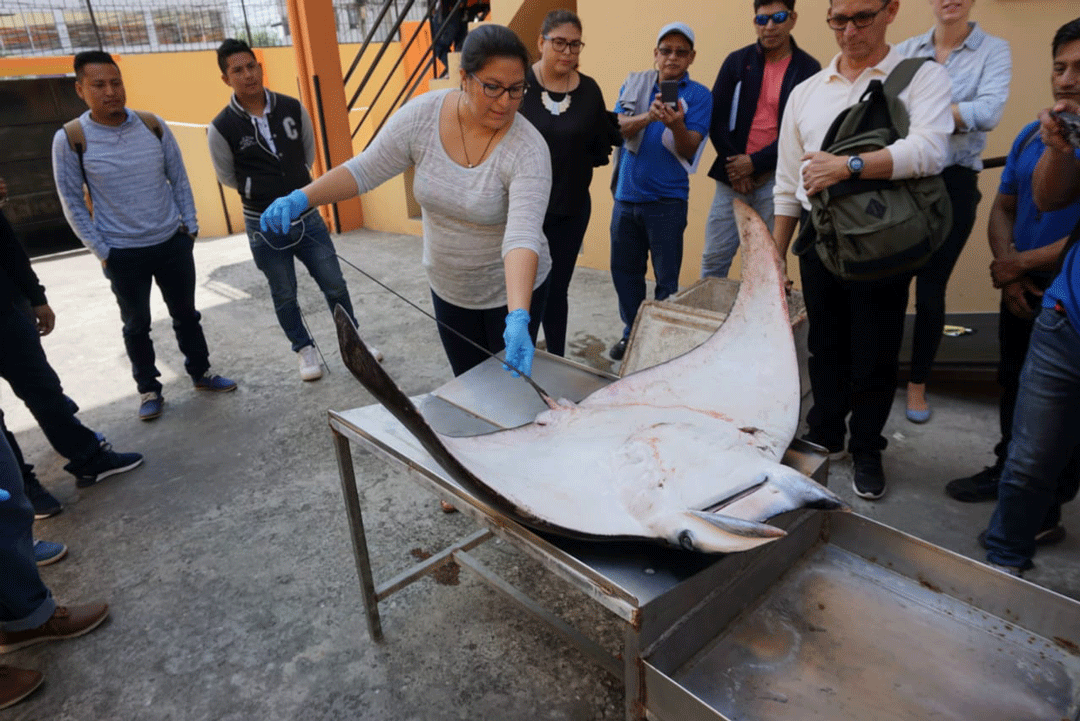
Photo © Melissa Cronin
The workshop was led by three members of our collaborative research team: Dr. Nerea Lezama-Ochoa, a post-doctoral researcher at the Inter-American Tropical Tuna Commission and AZTI-Tecnalia, Stefany Rojas, Peru Project Leader at The Manta Trust, and Melissa Cronin, a graduate student at the University of California, Santa Cruz. The day was packed with hands-on training. First, observers started with the whos-who of manta and devil rays: because the eastern Pacific’s five mobulid ray species look physically similar to one another, accurate identification can be tricky—unless, of course, you know where to look. Stefany led the observers through the differences in the body shape and patterning, the shape and placement of the spiracle, or respiratory openings, and other differences between species based on an identification guide developed by The Manta Trust with support from SOSF. The training was followed by an (admittedly, pretty difficult!) on-the-spot quiz.

Photo © Melissa Cronin
Next, observers learned to deploy pop-up archival survivorship tags (sPAT and miniPAT), as part of a post-release survivorship study for manta and devil rays, led by a consortium of researchers from The Manta Trust, Monterey Bay Aquarium, and UC Santa Cruz. The goal of the study is to quantify mortality rates for mobulid ray species after they have been caught and released in the purse seine fishery. After individuals are tagged by fisheries observers, the tags will monitor the rays’ behaviour for 30 days after release, allowing us to compare variables like time spent on board, different handling techniques, and the response of different species, in an effort to understand best practices for reducing mobulid mortality in fisheries bycatch. The long-term goal of this study is to create science-based best practices guidelines for handling and release of mobulids in purse seine fisheries.

Photo © Melissa Cronin
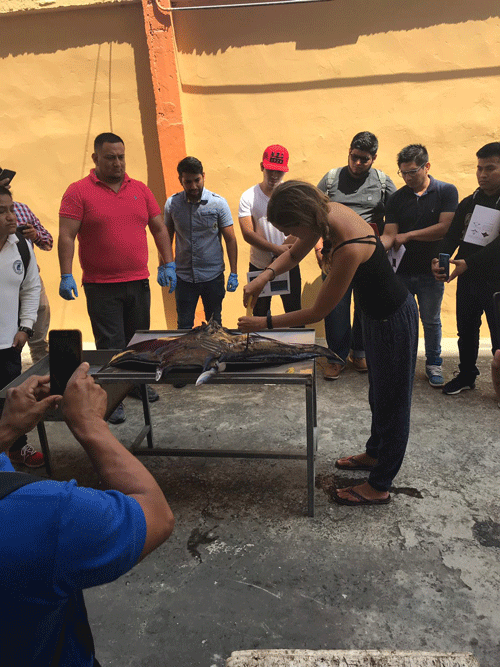
Photo © Melissa Cronin
Last, we trained observers to take small tail tissue samples for an ongoing project that seeks to understand the population genetic structure — or the diversity within and among populations — of the mobulid species in the Eastern Tropical Pacific. The observers will take samples all across the eastern Pacific Ocean, providing coverage of regions that have never previously been sampled, and offering a unique window into the population and conservation status of the rays. Using a preserved specimen, observers got some valuable hands-on practice.

Photo © Melissa Cronin
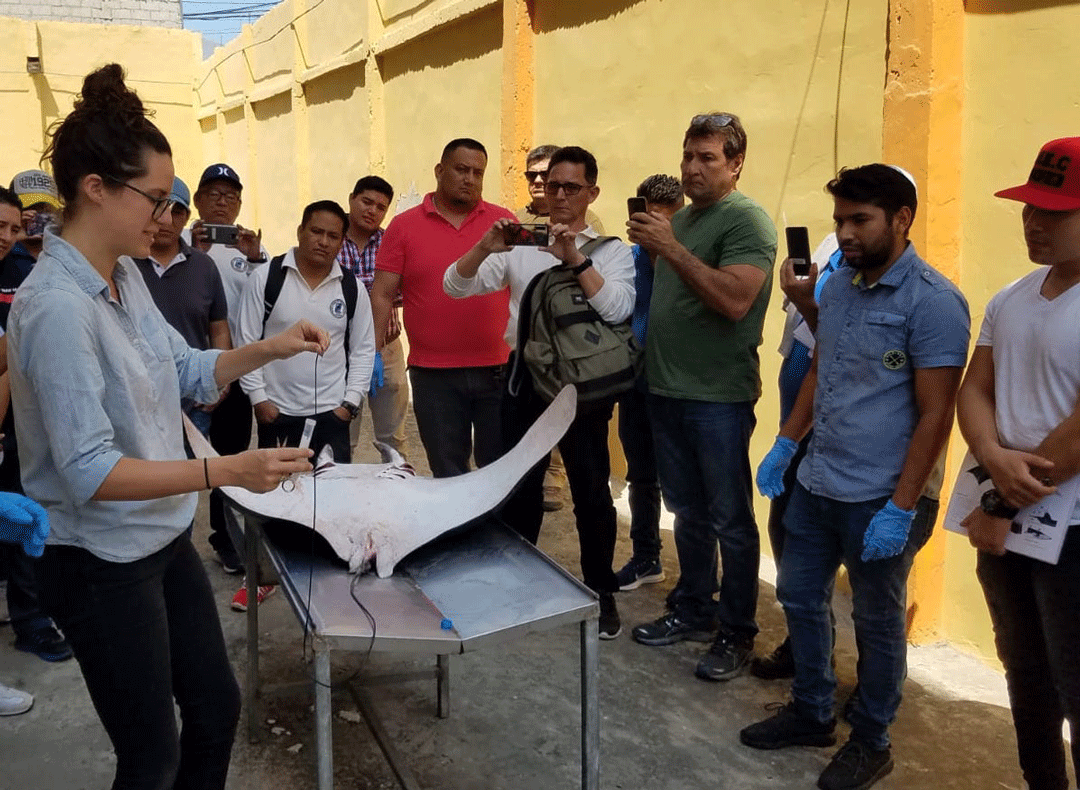
Photo © Melissa Cronin
These studies are part of a collaborative network between the Monterey Bay Aquarium, the Conservation Action Lab at UC Santa Cruz, and the Manta Trust, in partnership with fisheries observers from TUNACONS and PROBECUADOR. Of course, once the workshop was over, our team couldn’t resist stopping in on a frequent haunt for Ecuador’s oceanic manta rays (Mobula birostris)—a cleaning station off the coastal city of Puerto Lopez and the primary study site of Proyecto Mantas Ecuador. After hard work studying mantas and their biggest threats, seeing these enormous but graceful giants swimming freely in the ocean was a welcome reminder of exactly why we do this work.
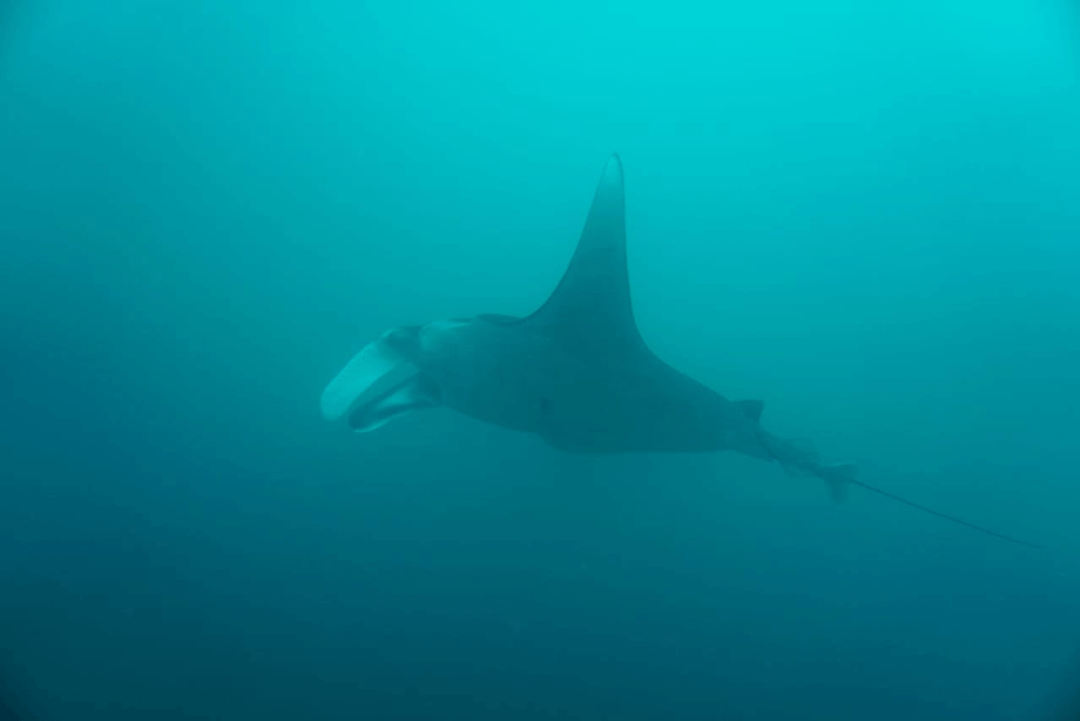
Photo © Melissa Cronin
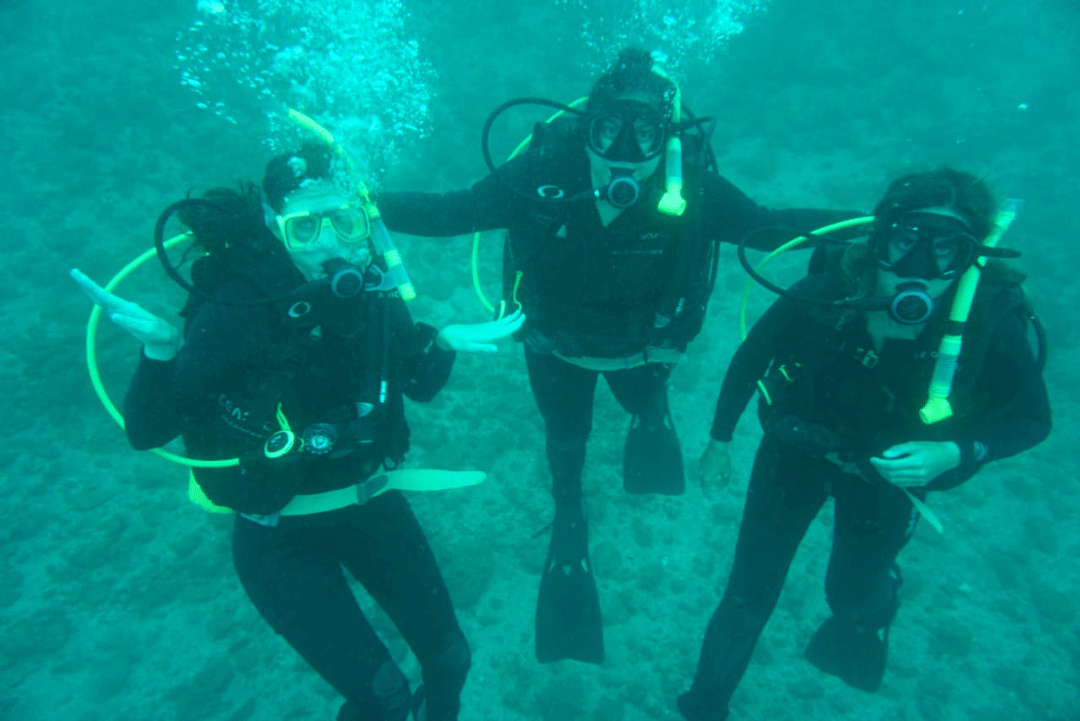
Photo © Melissa Cronin
